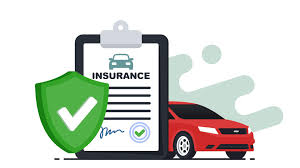Buying car insurance for the first time can be overwhelming. With so many providers, coverage options, and price differences, it’s important to understand the basics so you can make the right decision. Whether you’re a teenager getting your first car or an adult driving for the first time, this guide will walk you through everything you need to know about car insurance in the United States.

Why First-Time Drivers Pay More
First-time drivers, especially teens and young adults, are considered high-risk by insurance companies. This is mainly because they lack driving experience and are statistically more likely to be involved in accidents.
Factors that influence high premiums for new drivers include:
-
Age and experience: Younger drivers under 25 pay more due to accident risk.
-
Driving history: With no history to evaluate, insurers assume higher risk.
-
Type of vehicle: Sports cars or luxury cars cost more to insure.
-
Location: Rates differ depending on the state and city due to traffic density and accident statistics.
Types of Car Insurance Coverage
Before buying, it’s crucial to understand the main types of car insurance:
-
Liability Insurance: Covers damage and injuries you cause to others. This is legally required in most states.
-
Collision Insurance: Pays for damage to your car after an accident, regardless of fault.
-
Comprehensive Insurance: Covers damage not caused by a crash (e.g., theft, weather, vandalism).
-
Uninsured/Underinsured Motorist Coverage: Protects you if you’re hit by a driver with little or no insurance.
-
Personal Injury Protection (PIP): Covers medical expenses for you and your passengers, regardless of fault (required in some states).
How Much Does It Cost?
On average, first-time drivers in the U.S. can expect to pay between $1,800 and $4,000 per year for full coverage. Minimum liability-only policies may cost less but offer limited protection.
Sample annual premiums for 18-year-old drivers (estimates):
-
State minimum liability: $1,200 – $2,200
-
Full coverage: $2,500 – $4,000
Note: Rates can be lower if the driver is added to a parent’s policy rather than buying one individually.
Tips to Lower Car Insurance Costs for First-Time Drivers
Here are practical strategies to reduce your insurance premium:
-
Join a family plan: Being on a parent’s or guardian’s plan often results in significant savings.
-
Choose a safe vehicle: Opt for sedans or cars with high safety ratings over sports or luxury models.
-
Maintain good grades: Many insurers offer student discounts for GPA above 3.0.
-
Complete a defensive driving course: Certified training can lower premiums in many states.
-
Use telematics programs: Some insurers offer discounts for using apps that track safe driving habits.
-
Compare quotes: Use comparison websites to get the best deal based on your location and needs.
-
Increase your deductible: Higher deductibles reduce monthly premiums, though they increase out-of-pocket costs in the event of a claim.
Best Car Insurance Companies for First-Time Drivers (2025)
While many insurers offer plans for new drivers, the following are often rated highly for affordability and beginner-friendly features:
-
Geico: Offers affordable rates and strong discount programs for students and safe drivers.
-
State Farm: Great for teens on family policies, with a Steer Clear program for safe driving education.
-
Progressive: Known for customizable plans and usage-based insurance discounts.
-
Allstate: Offers teenSMART and Drivewise programs to promote safer driving.
-
Nationwide: Good rates for college students and accident forgiveness options.
State Requirements for Car Insurance
Each state sets its own minimum car insurance requirements. As a new driver, you must comply with your state’s laws. For example:
-
California: Minimum liability is 15/30/5 (i.e., $15,000 for injury per person, $30,000 per accident, $5,000 for property damage)
-
Texas: 30/60/25
-
Florida: Requires PIP and property damage liability but not bodily injury liability
Check with your state’s Department of Motor Vehicles (DMV) for the most accurate requirements.
Should First-Time Drivers Buy Full Coverage?
Full coverage is often recommended, especially for new drivers, because:
-
You’re more likely to have an accident in your first few years of driving.
-
Repairs or total loss of a vehicle can be expensive without collision or comprehensive coverage.
-
If you’re financing your car, lenders usually require full coverage.
However, if you’re driving an older vehicle and want to save on premiums, liability-only insurance may be enough.
What Documents Are Needed?
To buy car insurance, you’ll typically need:
-
A valid driver’s license
-
Vehicle identification number (VIN)
-
Proof of address
-
Driving history (if applicable)
-
Social Security number (sometimes)
Once you provide this information, insurers can issue a quote and begin coverage immediately in most cases.
